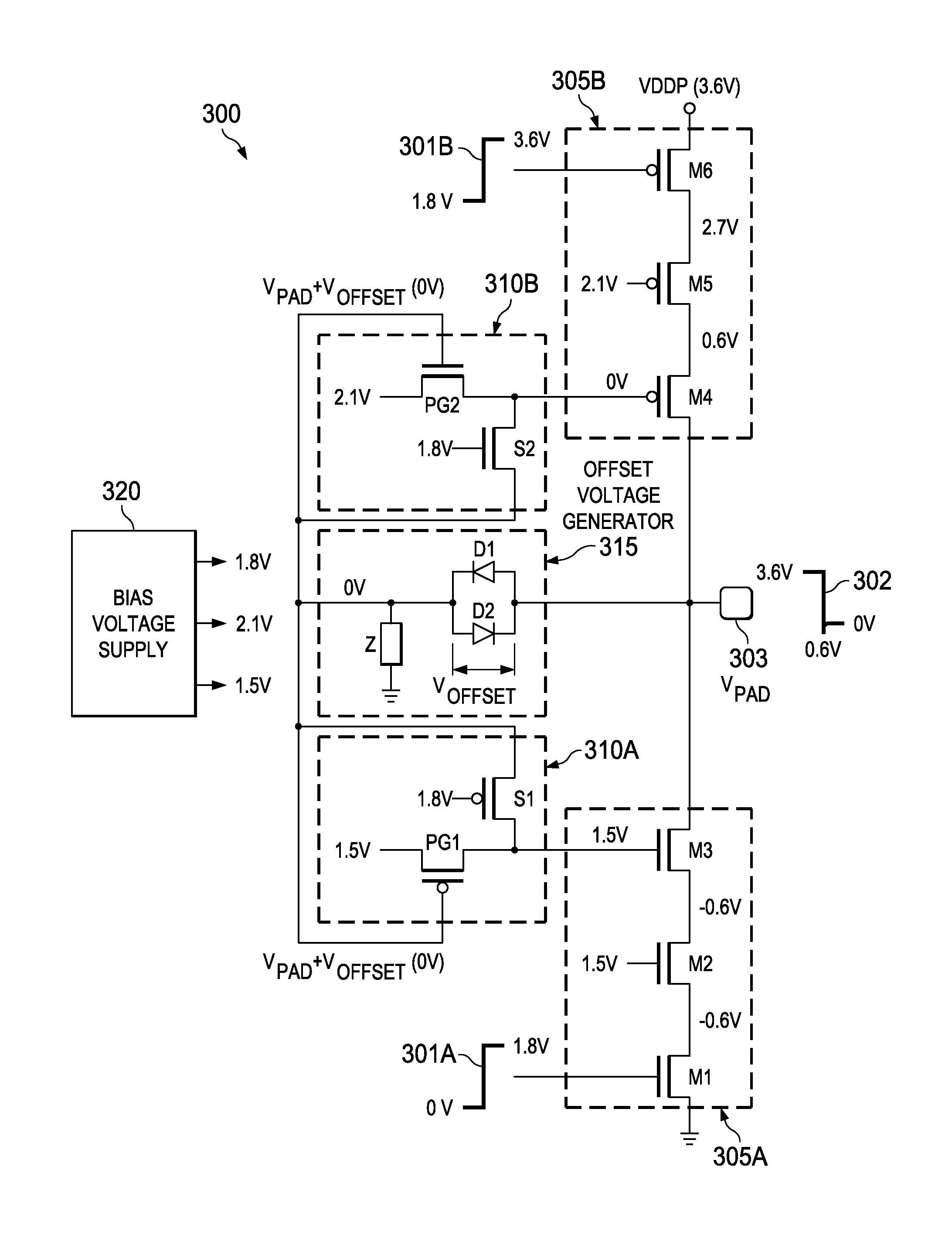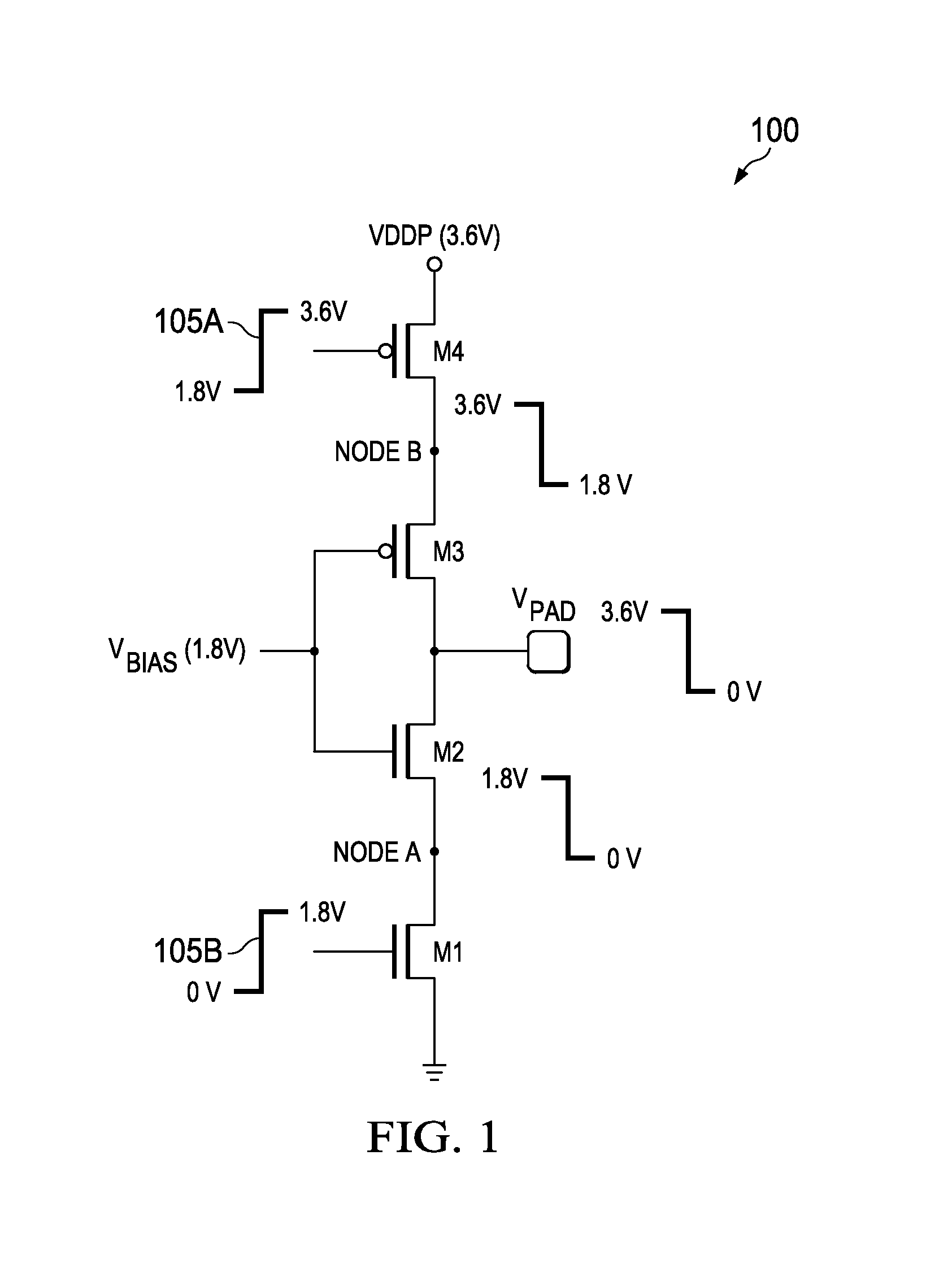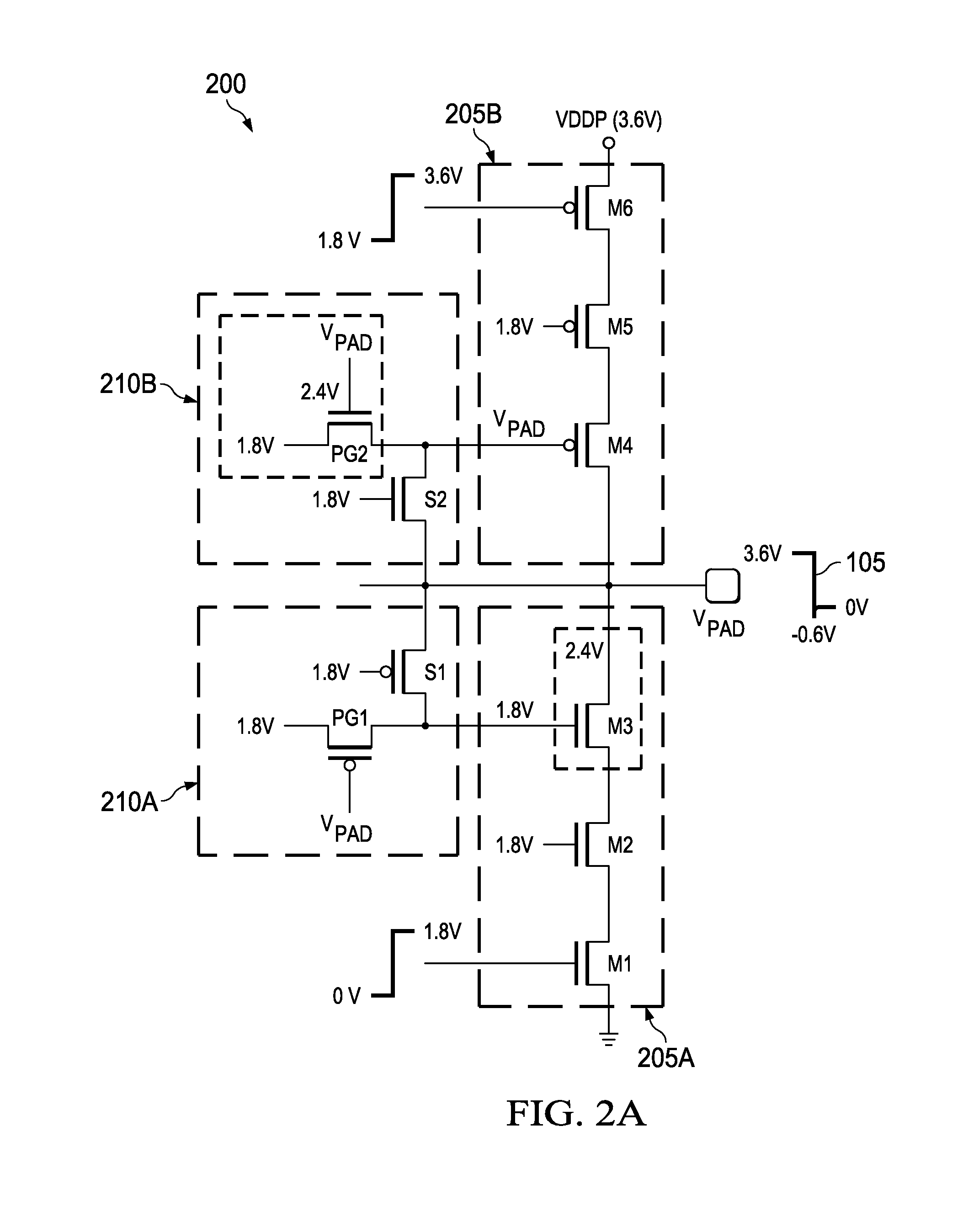Oxide stress reduction for a cascode stack circuit
a stack circuit and cascode technology, applied in pulse generators, pulse techniques, instruments, etc., can solve the problems of reducing destroying the oxide layer, and affecting the efficiency so as to reduce the oxide stress of the cascode stack and reduce the oxide stress
- Summary
- Abstract
- Description
- Claims
- Application Information
AI Technical Summary
Benefits of technology
Problems solved by technology
Method used
Image
Examples
Embodiment Construction
[0012]Embodiments of the present disclosure reduce transient voltage oxide degradation conditions of component transistors employed in cascode stack circuits, wherein steady-state output voltage signaling exceeds component transistor oxide reliability voltage values. Protection is provided for both transient voltage overshoot and undershoot conditions. In this disclosure, oxide reliability voltage is defined as a voltage that provides an oxide stress corresponding to an oxide remaining adequately functional over a long period of time. Here, embodiments of the present disclosure allow tailoring of this period of time to meet a particular requirement or constraint.
[0013]FIG. 1 illustrates a schematic diagram of a cascode transistor stack, generally designated 100, that provides output signal amplitudes greater than an oxide reliability voltage of its component transistors. The cascode transistor stack 100 illustrates a cascode structure and includes a pair of NMOS transistors M1, M2 a...
PUM
 Login to View More
Login to View More Abstract
Description
Claims
Application Information
 Login to View More
Login to View More - R&D
- Intellectual Property
- Life Sciences
- Materials
- Tech Scout
- Unparalleled Data Quality
- Higher Quality Content
- 60% Fewer Hallucinations
Browse by: Latest US Patents, China's latest patents, Technical Efficacy Thesaurus, Application Domain, Technology Topic, Popular Technical Reports.
© 2025 PatSnap. All rights reserved.Legal|Privacy policy|Modern Slavery Act Transparency Statement|Sitemap|About US| Contact US: help@patsnap.com



